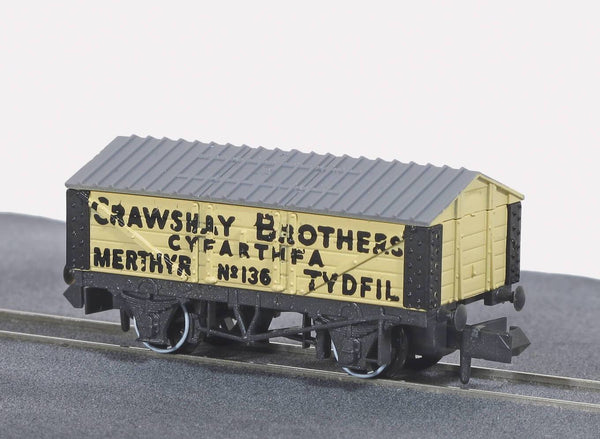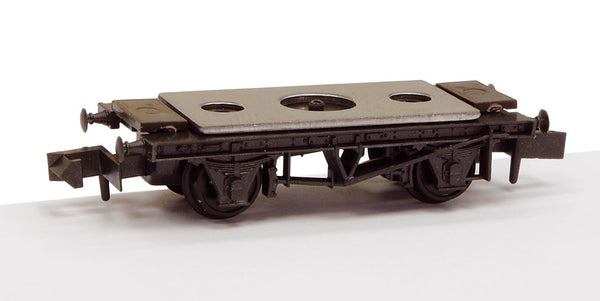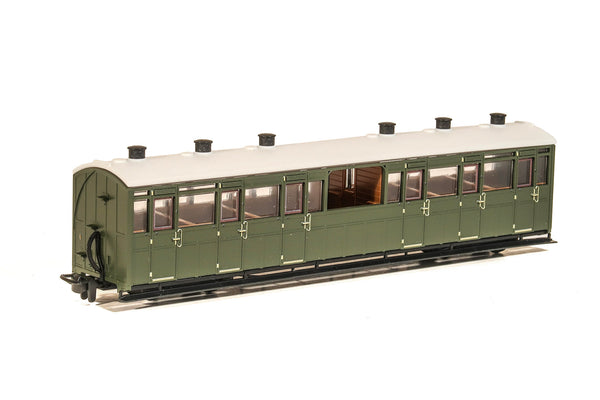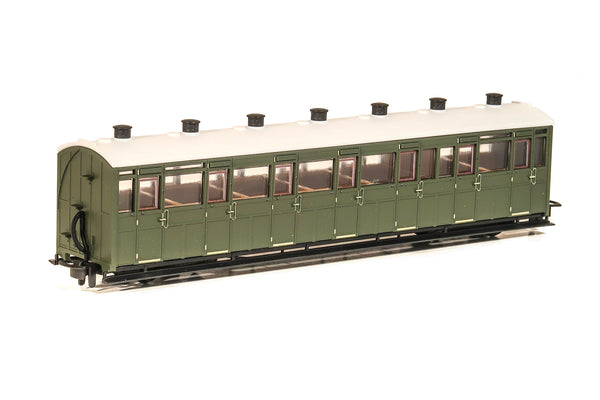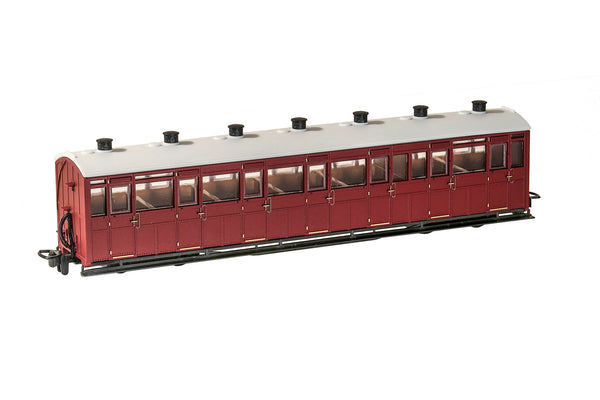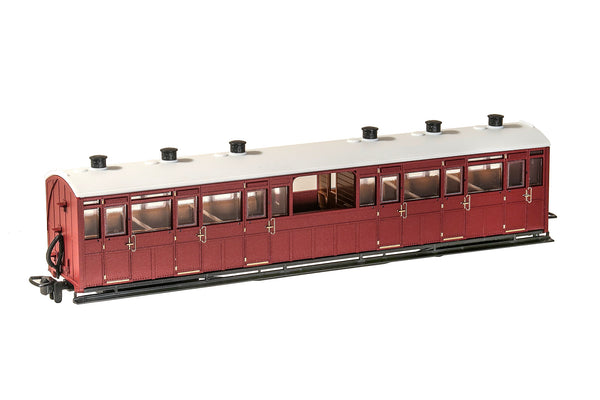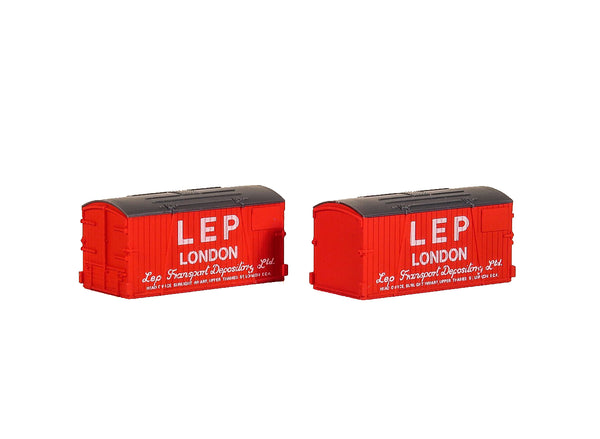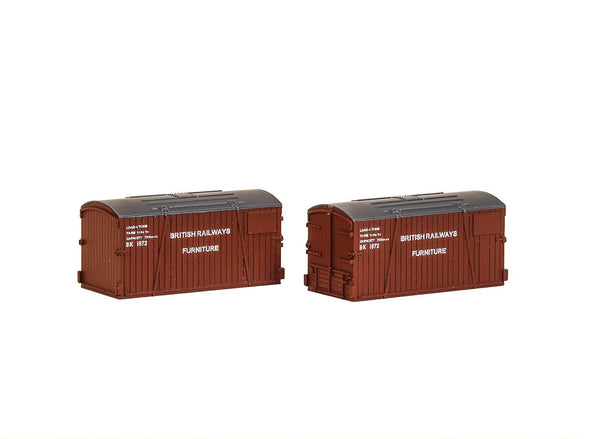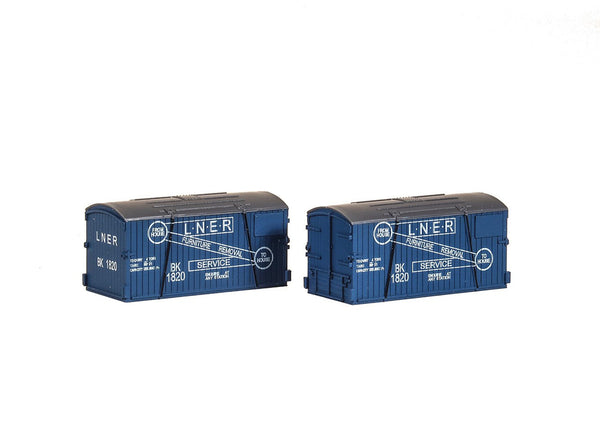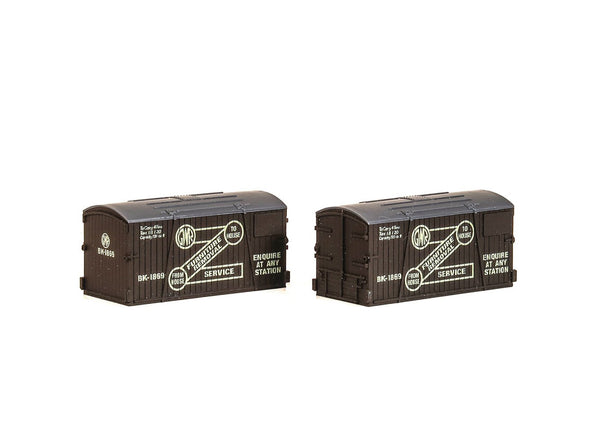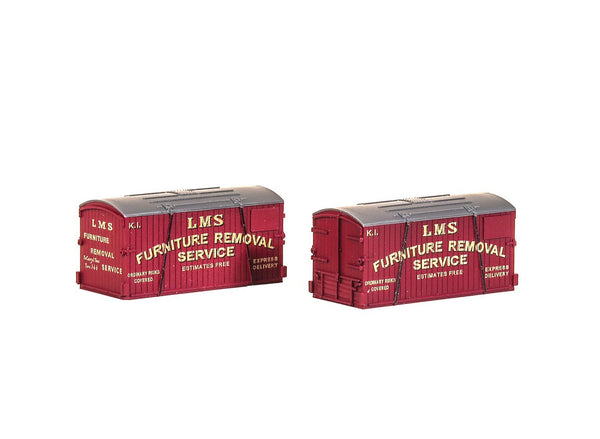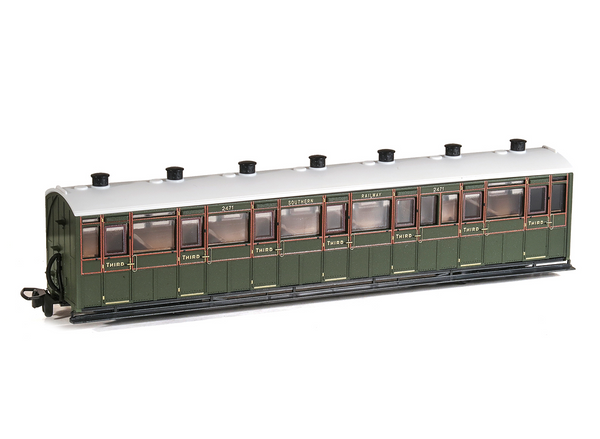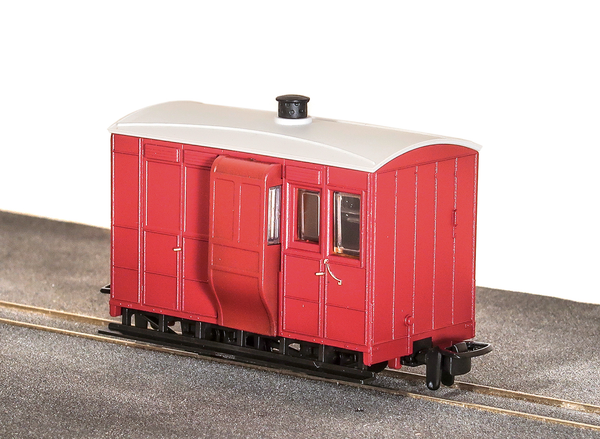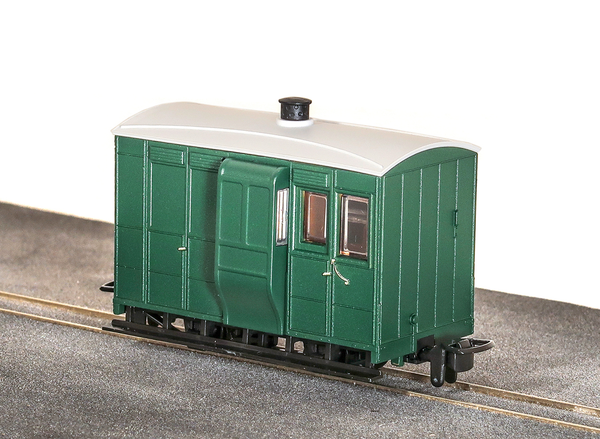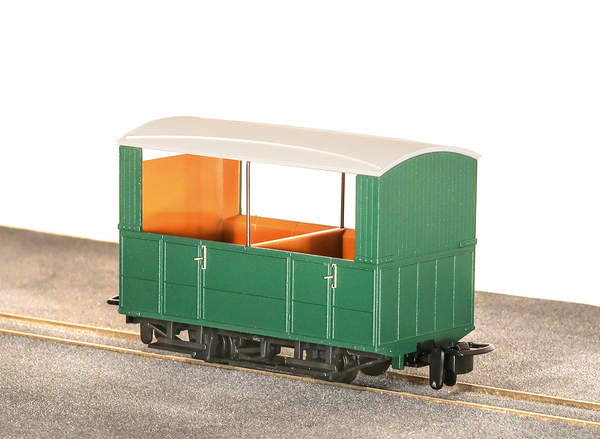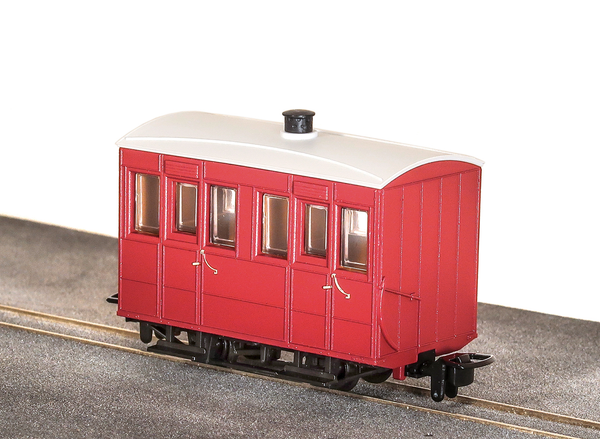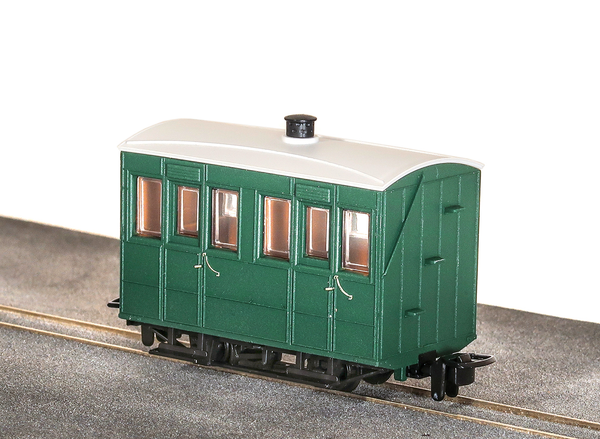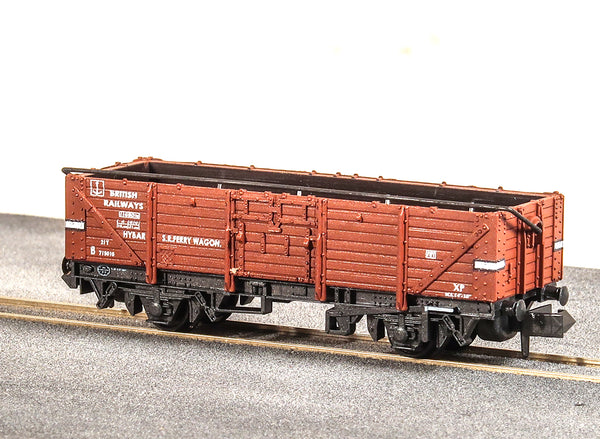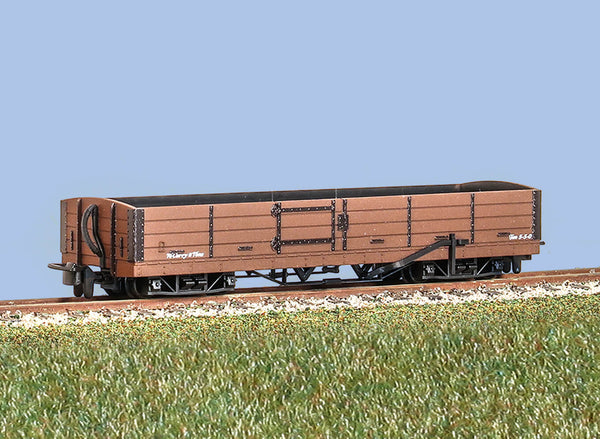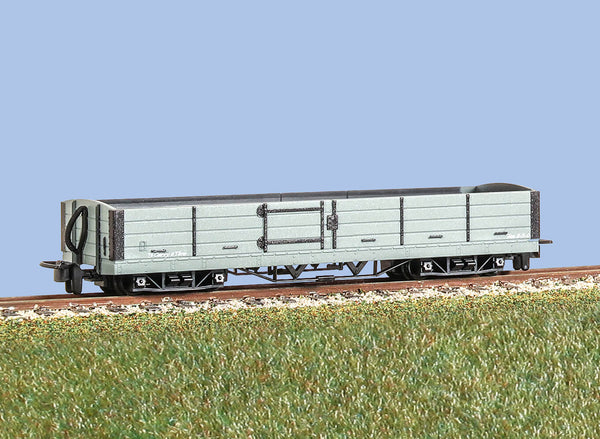BROWSE PECO PRODUCTS
Browse through our complete product portfolio.
740 Products Found
Crawshay Lime Wagon with Roof
Private owner wagons abounded prior to nationalisation, they would often be seen far from their base as they were sent to collect raw materials and supplies such as coal, and deliver finished goods. All Peco wagons feature free running wheels in pin point axles. The ELC coupling, whilst compatible with the standard N gauge couplings, keeps a realistic distance between vehicles and enables the PL-25 electro magnetic decoupler to be used for remote uncoupling.
10ft WB Wagon Chassis, Steel Type Sole Bars with Disc Wheels
Chassis kit include chassis weight, wheels, couplings and disc wheels.
OO-9 Observation Coach Unlettered Green
These finely detailed ready to run coaches and wagons are accurately modelled on the rolling stock of the Lynton and Barnstaple Railway, both as an independent railway and after its' absorption into the Southern railway in 1922. They are also available painted but unlettered for those modellers who wish to tailor them for use on other lines.
OO-9 All Third Coach Unlettered Green
These finely detailed ready to run coaches and wagons are accurately modelled on the rolling stock of the Lynton and Barnstaple Railway, both as an independent railway and after its' absorption into the Southern railway in 1922. They are also available painted but unlettered for those modellers who wish to tailor them for use on other lines.
OO-9 All Third Coach Unlettered Indian Red
These finely detailed ready to run coaches and wagons are accurately modelled on the rolling stock of the Lynton and Barnstaple Railway, both as an independent railway and after its' absorption into the Southern railway in 1922. They are also available painted but unlettered for those modellers who wish to tailor them for use on other lines.
OO-9 Obervation Coach Unlettered Indian Red
These finely detailed ready to run coaches and wagons are accurately modelled on the rolling stock of the Lynton and Barnstaple Railway, both as an independent railway and after its' absorption into the Southern railway in 1922. They are also available painted but unlettered for those modellers who wish to tailor them for use on other lines.
LEP Furniture Removals (Pack of 2)
An ideal load for a conflat or haulage vehicle, or as an accessory in a station yard or factory. Once dubbed 'the suitcase of industry' these railway containers were the precursor of the modern container, allowing a contained load to be quickly unloaded or transhipped from rail to road transport. (Pack of 2).
BR Furniture Removals (Pack of 2)
An ideal load for a conflat or haulage vehicle, or as an accessory in a station yard or factory. Once dubbed 'the suitcase of industry' these railway containers were the precursor of the modern container, allowing a contained load to be quickly unloaded or transhipped from rail to road transport. (Pack of 2).
SR Furniture Removals (Pack of 2)
An ideal load for a conflat or haulage vehicle, or as an accessory in a station yard or factory. Once dubbed 'the suitcase of industry' these railway containers were the precursor of the modern container, allowing a contained load to be quickly unloaded or transhipped from rail to road transport. (Pack of 2).
LNER Furniture Removals (Pack of 2)
An ideal load for a conflat or haulage vehicle, or as an accessory in a station yard or factory. Once dubbed 'the suitcase of industry' these railway containers were the precursor of the modern container, allowing a contained load to be quickly unloaded or transhipped from rail to road transport. (Pack of 2).
GWR Furniture Removals (Pack of 2)
An ideal load for a conflat or haulage vehicle, or as an accessory in a station yard or factory. Once dubbed 'the suitcase of industry' these railway containers were the precursor of the modern container, allowing a contained load to be quickly unloaded or transhipped from rail to road transport. (Pack of 2).
LMS Furniture Removals (Pack of 2)
An ideal load for a conflat or haulage vehicle, or as an accessory in a station yard or factory. Once dubbed 'the suitcase of industry' these railway containers were the precursor of the modern container, allowing a contained load to be quickly unloaded or transhipped from rail to road transport. (Pack of 2).
OO-9 Centre Observation Coach SR Livery No 2468
These finely detailed ready to run coaches and wagons are accurately modelled on the rolling stock of the Lynton and Barnstaple Railway, both as an independent railway and after its' absorption into the Southern railway in 1922. They are also available painted but unlettered for those modellers who wish to tailor them for use on other lines.
OO-9 All 3rd Coach SR Livery No 2471
These finely detailed ready to run coaches and wagons are accurately modelled on the rolling stock of the Lynton and Barnstaple Railway, both as an independent railway and after its' absorption into the Southern railway in 1922. They are also available painted but unlettered for those modellers who wish to tailor them for use on other lines.
OO-9 Centre Observation Coach Lynton and Barnstaple Livery No 10
These finely detailed ready to run coaches and wagons are accurately modelled on the rolling stock of the Lynton and Barnstaple Railway, both as an independent railway and after its' absorption into the Southern railway in 1922. They are also available painted but unlettered for those modellers who wish to tailor them for use on other lines.
OO-9 4 Wheel Brake Coach Red
These delightful ready to run coaches are based on those used on the Glyn Valley Tramway. This plain green vehicle is ideal for a modeller who wishes to create their own imaginary narrow gauge line, or for those wishing to adapt them to suit another prototype. A matching open sided coach (Ref. GR-520UR) and enclosed coach (Ref. GR-500UR) are available; all three vehicles are also produced in plain green (Ref GR-500UG, GR-520UG, & GR-530UG).
OO-9 4 Wheel Brake Coach Green
These delightful ready to run coaches are based on those used on the Glyn Valley Tramway. This plain green vehicle is ideal for a modeller who wishes to create their own imaginary narrow gauge line, or for those wishing to adapt them to suit another prototype. A matching open sided coach (Ref. GR-520UG) and enclosed coach (Ref. GR-500UG) are available; all three vehicles are also produced in plain red (Ref GR-500UR, GR-520UR, & GR-530UR).
OO-9 4 Wheel Open Side Coach Red
These delightful ready to run coaches are based on those used on the Glyn Valley Tramway. This plain red vehicle is ideal for a modeller who wishes to create their own imaginary narrow gauge line, or for those wishing to adapt them to suit another prototype. A matching enclosed coach (Ref. GR-500UR) and a brake coach (Ref. GR-530UR) are available; all three vehicles are also produced in plain green (Ref GR-500UG, GR-520UG, & GR-530UG).
OO-9 4 Wheel Open Side Coach Green
These delightful ready to run coaches are based on those used on the Glyn Valley Tramway. This plain green vehicle is ideal for a modeller who wishes to create their own imaginary narrow gauge line, or for those wishing to adapt them to suit another prototype. A matching enclosed coach (Ref. GR-500UG) and a brake coach (Ref. GR-530UG) are available; all three vehicles are also produced in plain red (Ref GR-500UR, GR-520UR, & GR-530UR).
OO-9 4 Wheel Enclosed Side Coach Red
These delightful ready to run coaches are based on those used on the Glyn Valley Tramway. This plain red vehicle is ideal for a modeller who wishes to create their own imaginary narrow gauge line, or for those wishing to adapt them to suit another prototype. A matching open sided coach (Ref. GR-520UR) and a brake coach (Ref. GR-530UR) are available; all three vehicles are also produced in plain green (Ref GR-500UG, GR-520UG, & GR-530UG).
OO-9 4 Wheel Enclosed Side Coach Green
These delightful ready to run coaches are based on those used on the Glyn Valley Tramway. This plain green vehicle is ideal for a modeller who wishes to create their own imaginary narrow gauge line, or for those wishing to adapt them to suit another prototype. A matching open sided coach (Ref. GR-520UG) and a brake coach (Ref. GR-530UG) are available; all three vehicles are also produced in plain red (Ref GR-500UR, GR-520UR, & GR-530UR).
Ferry Open Wagon BR 'Hybar'
Built in 1957, this small fleet of open wagons were design specifically for the movement of consignments to and from the continent by the channel train ferry. Allocated to the Southern Region, they featured an adjustable bar that supported a tarpaulin. On our model the bar is included, and can be removed as required, as was done on the real wagons when they were eventually used for internal traffic. Our model faithfully replicates the bauxite livery and all the various markings as per the prototype, including the corner flashes in black and white. All Peco wagons feature free running wheels in pin point axles. The ELC coupling, whilst compatible with the standard N gauge couplings, keeps a realistic distance between the vehicles and enables the PL-25 electro magnetic decoupler to be used for remote uncoupling.
OO-9 Bogie Open Wagon Brown
Based on our GR-231 Lynton & Barnstaple wagon (SR Livery) No 28313, this is an unlettered version for those who wish to create their own narrow gauge system or emulate another. Although unbranded, it still features the legally required weight and tare markings and strapping detail, plus separately-fitted brake levers and vacuum brake pipes. As with all of our previous models in this scale, it is free running and complete with couplings, which plug into the integral NEM pocket.
OO-9 Bogie Open Wagon Grey
Based on our GR-230 Lynton & Barnstaple wagon No 22, this is an unlettered version for those who wish to create their own narrow gauge system or emulate another. Although unbranded, it still features the legally required weight and tare markings and strapping detail, plus separately-fitted brake levers and vacuum brake pipes. As with all of our previous models in this scale, it is free running and complete with couplings, which plug into the integral NEM pocket.










